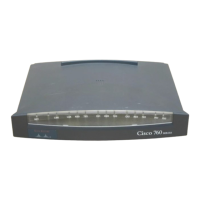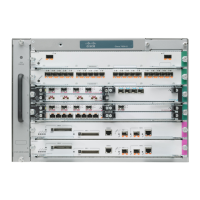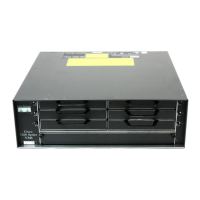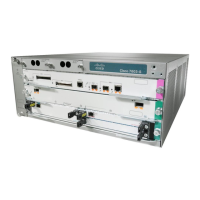5-20 Cisco 7010 Hardware Installation and Maintenance
Installing and Configuring Processor Modules
• b flash [filename]—Boots the file filename from Flash memory
For more information about the b [tftp] flash filename command, refer to the set of router products
configuration publications.
If you set the boot field value to 0x2 through 0xF, and there is a valid system boot command stored
in the configuration file, then the router boots the system software as directed by that value. If you
set the boot field to any other bit pattern, the router uses the resulting number to form a default boot
filename for netbooting. (See Table 5-6.)
In the following example, the software configuration register is set to boot the router from Flash
memory and to ignore Break at the next reboot of the router:
Router# conf term
Enter configuration commands, one per line. End with CTRL/Z.
config-register 0x102
boot system flash [filename]
^z
Router#
The server creates a default boot filename as part of the automatic configuration processes. To form
the boot filename, the server starts with the name cisco and adds the octal equivalent of the boot field
number, a hyphen, and the processor-type name. Table 5-6 lists the default boot filenames or actions
for the processor.
Table 5-6 Default Boot Filenames—Boot Field Jumpers
Note A boot system configuration command in the router configuration in NVRAM overrides the
default netboot filename.
Action/Filename Bit 3 Bit 2 Bit 1 Bit 0
bootstrap mode0000
ROM software0001
cisco2-rp1 0010
cisco3-rp1 0011
cisco4-rp1 0100
cisco5-rp1 0101
cisco6-rp1 0110
cisco7-rp1 0111
cisco10-rp1 1000
cisco11-rp1 1001
cisco12-rp1 1010
cisco13-rp1 1011
cisco14-rp1 1100
cisco15-rp1 1101
cisco16-rp1 1110
cisco17-rp1 1111

